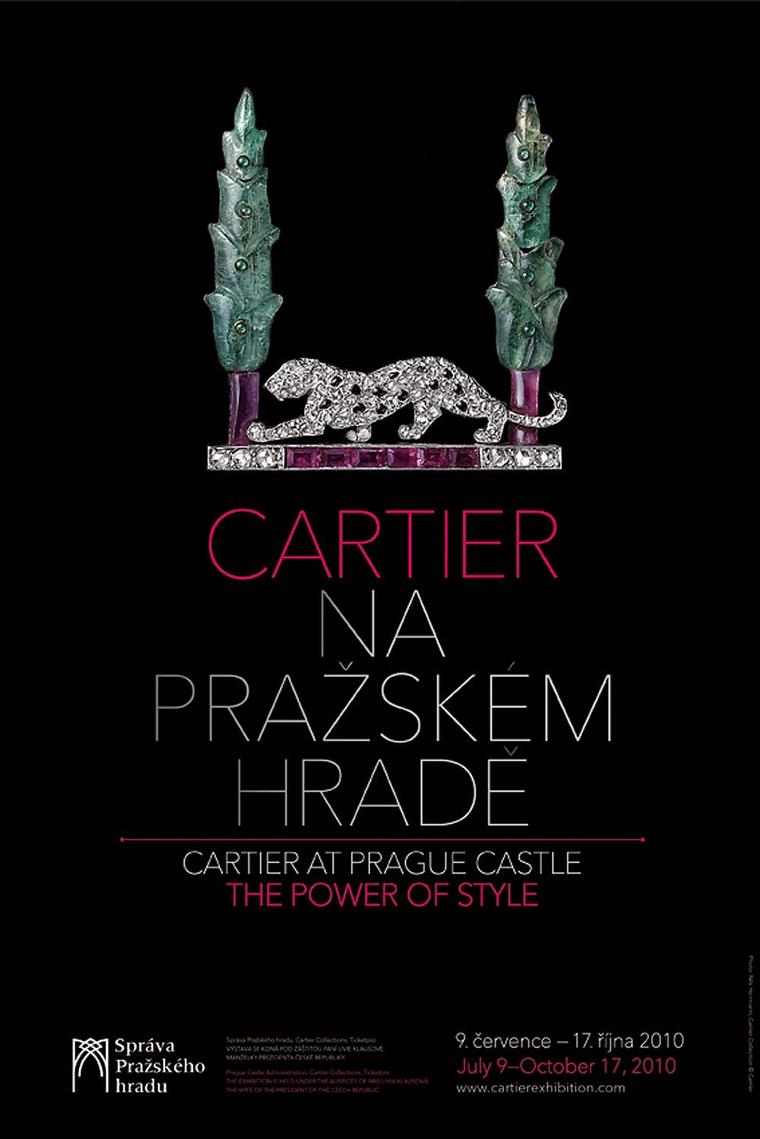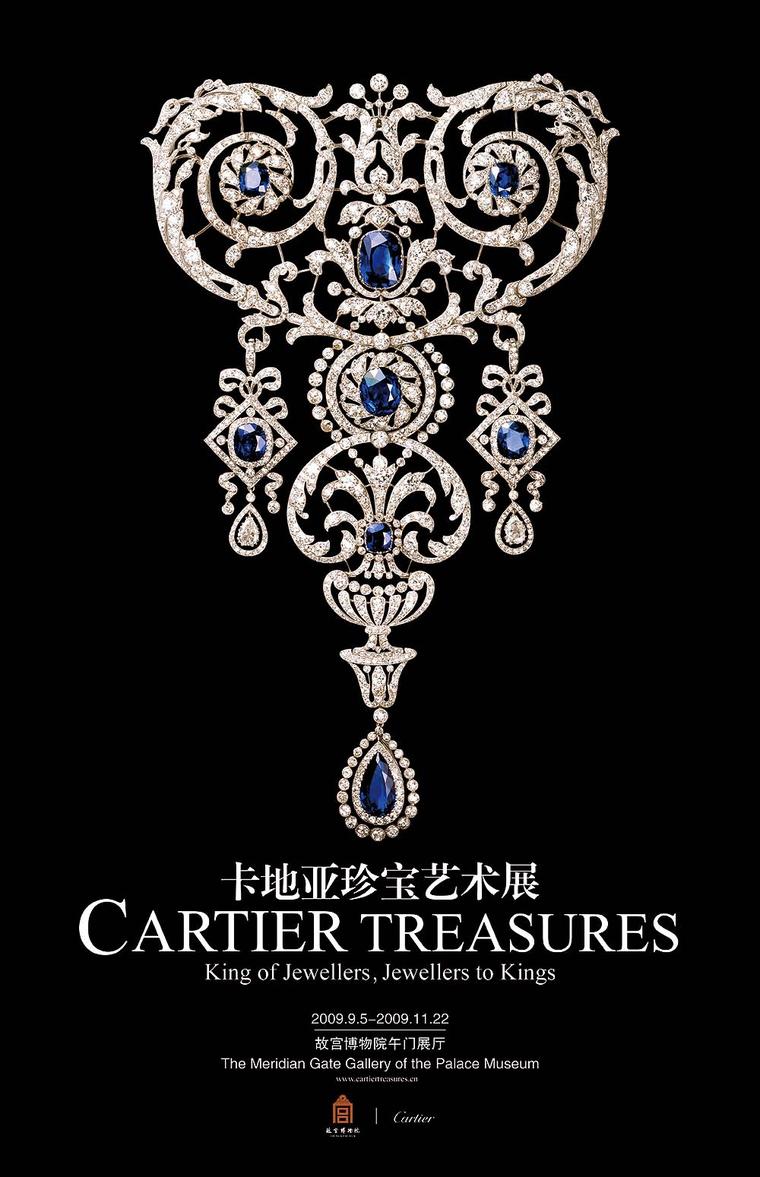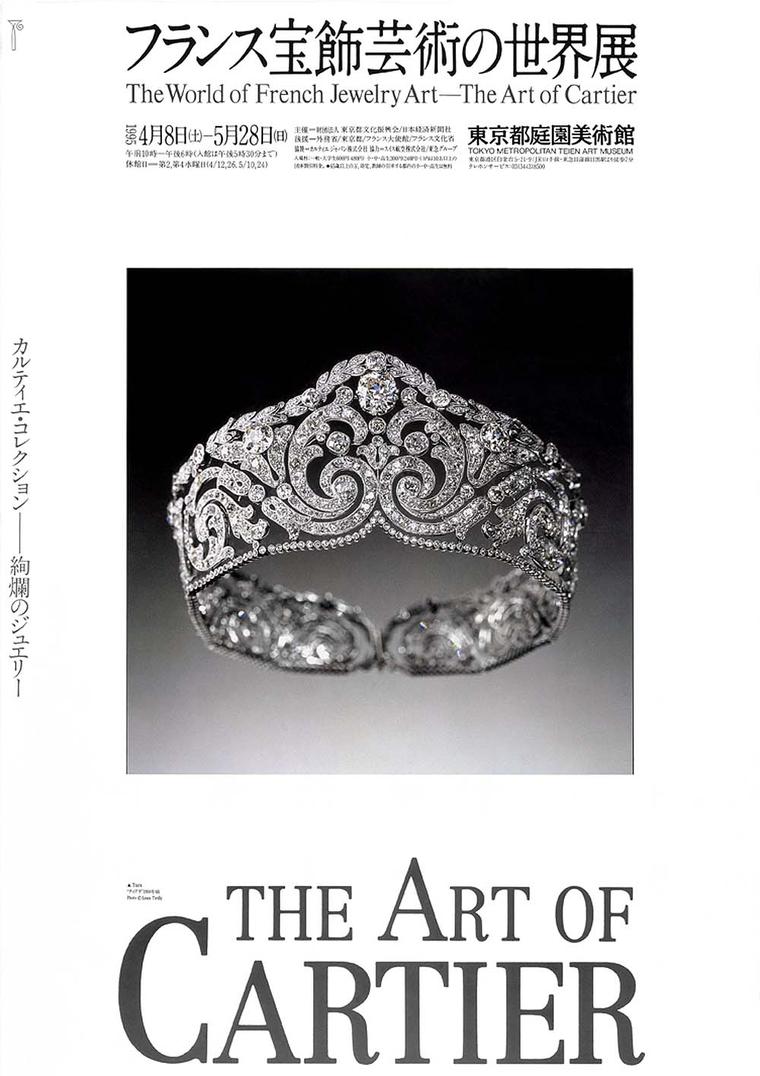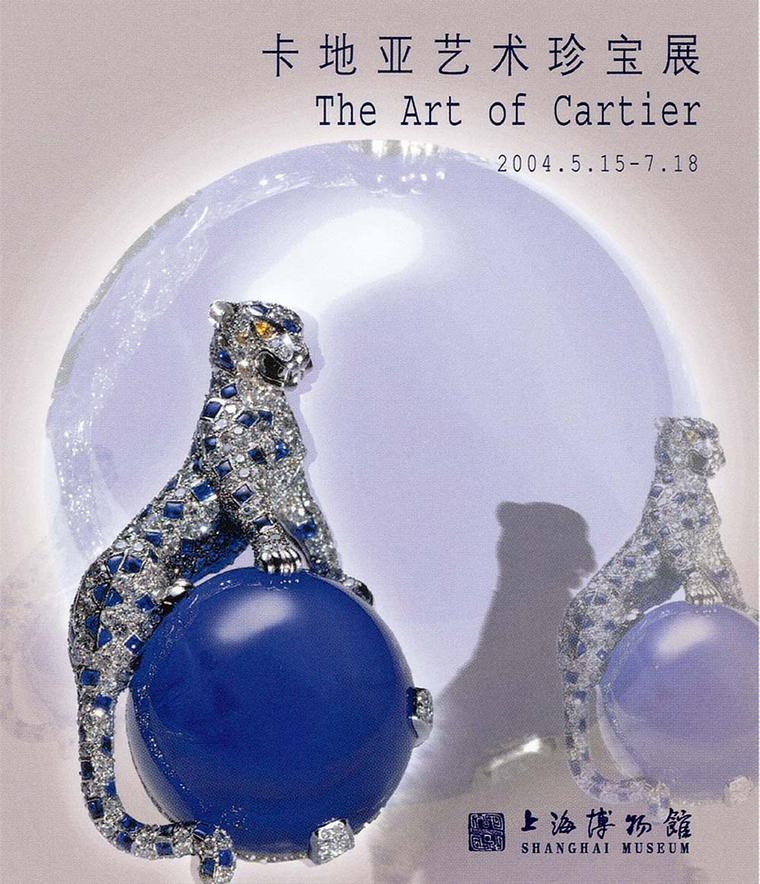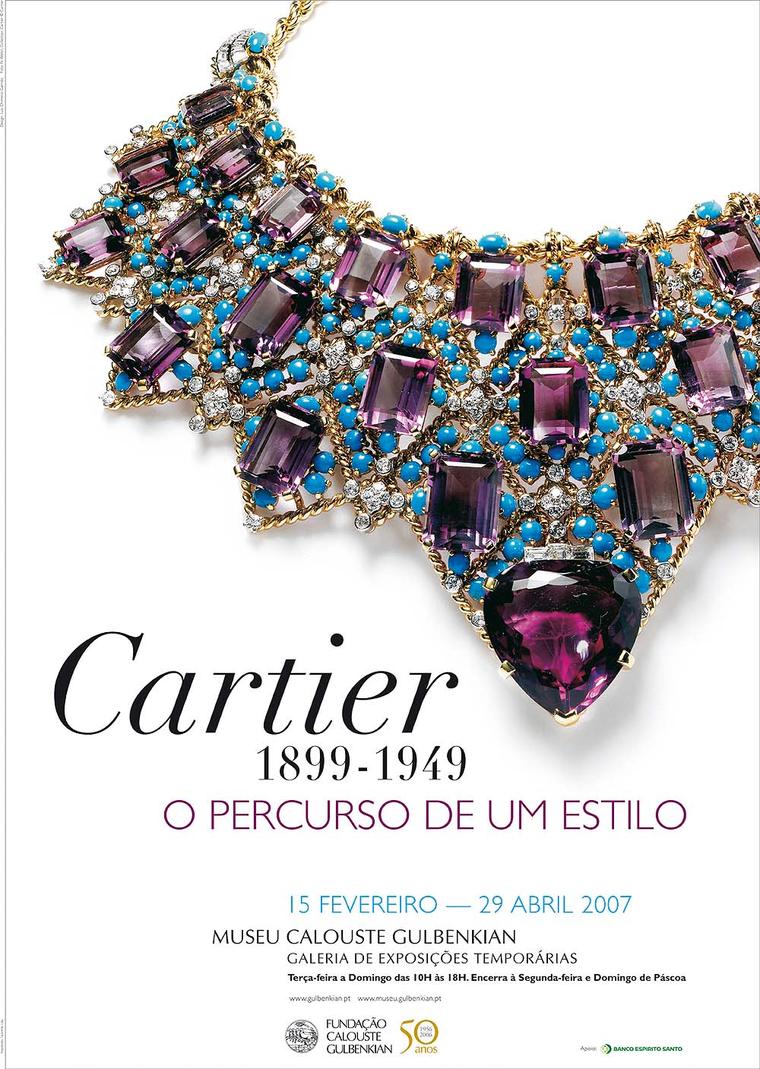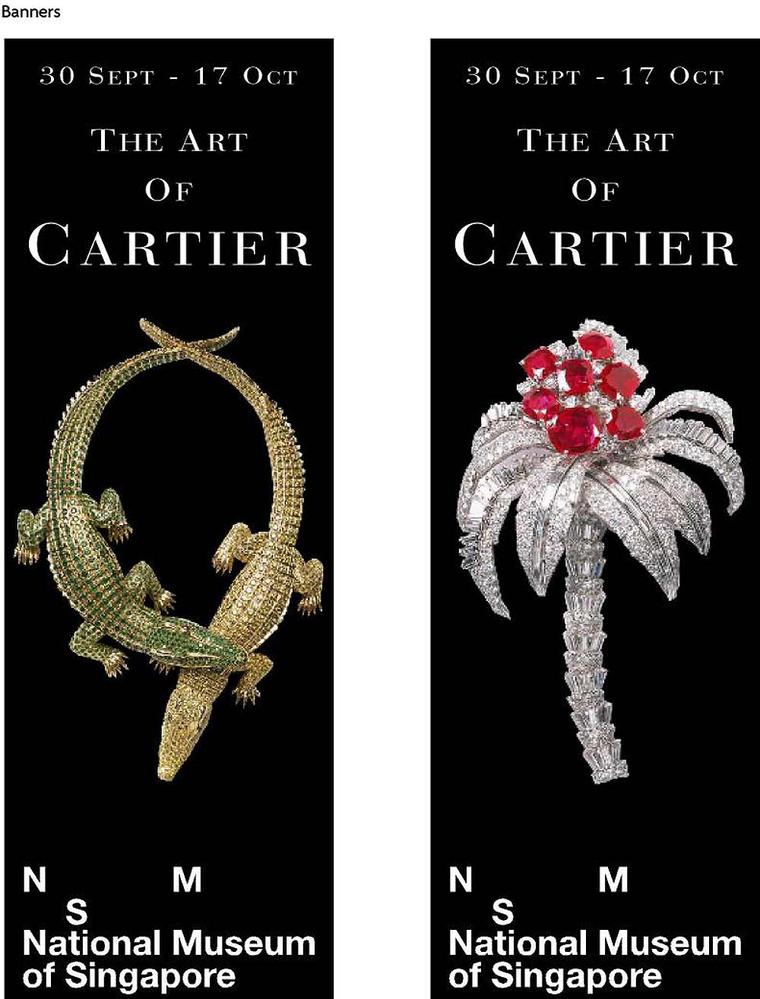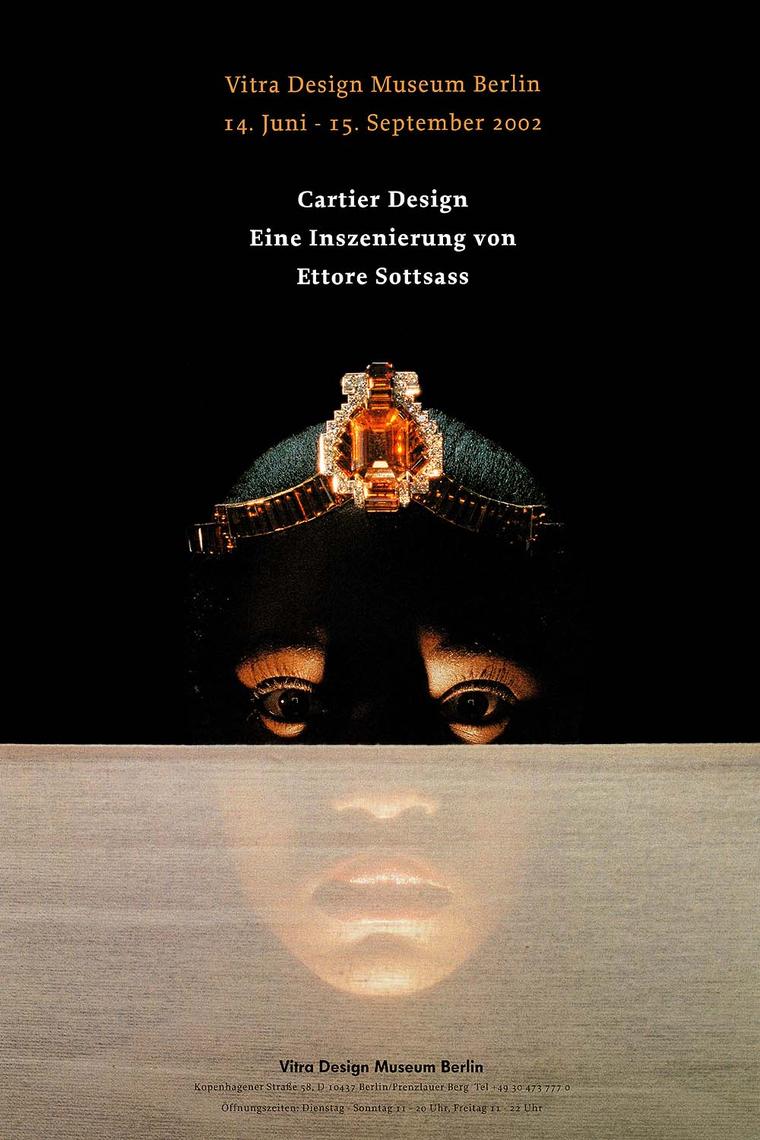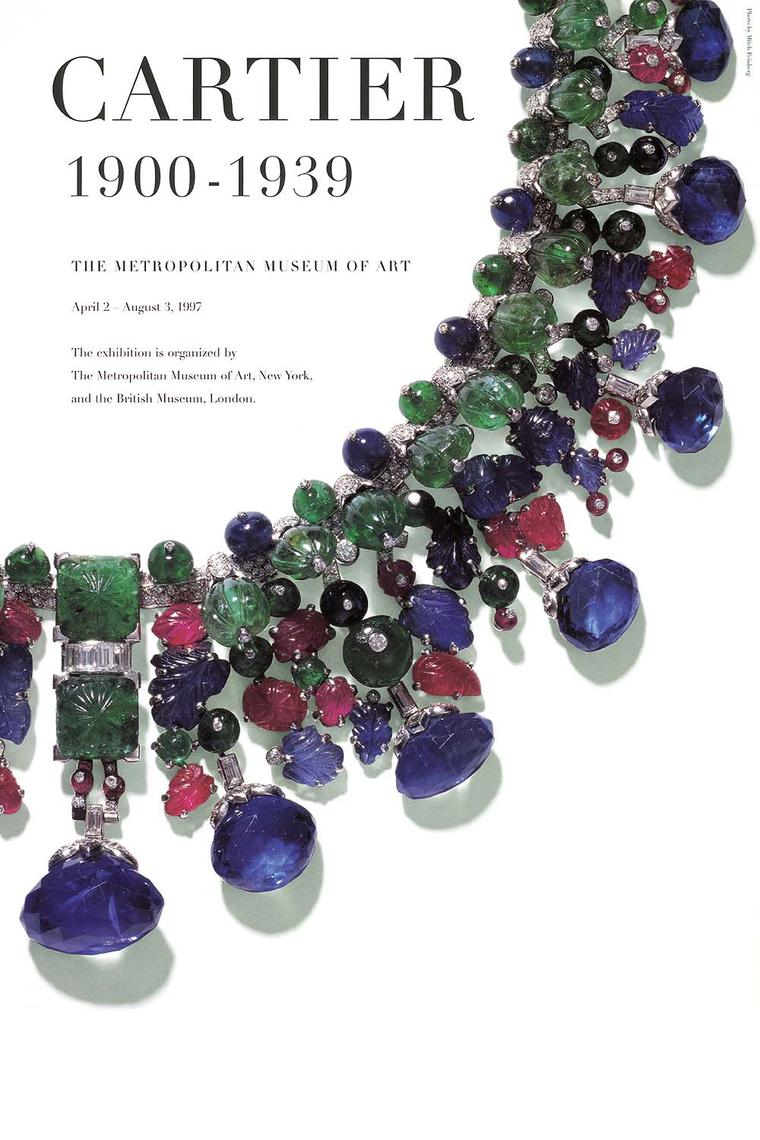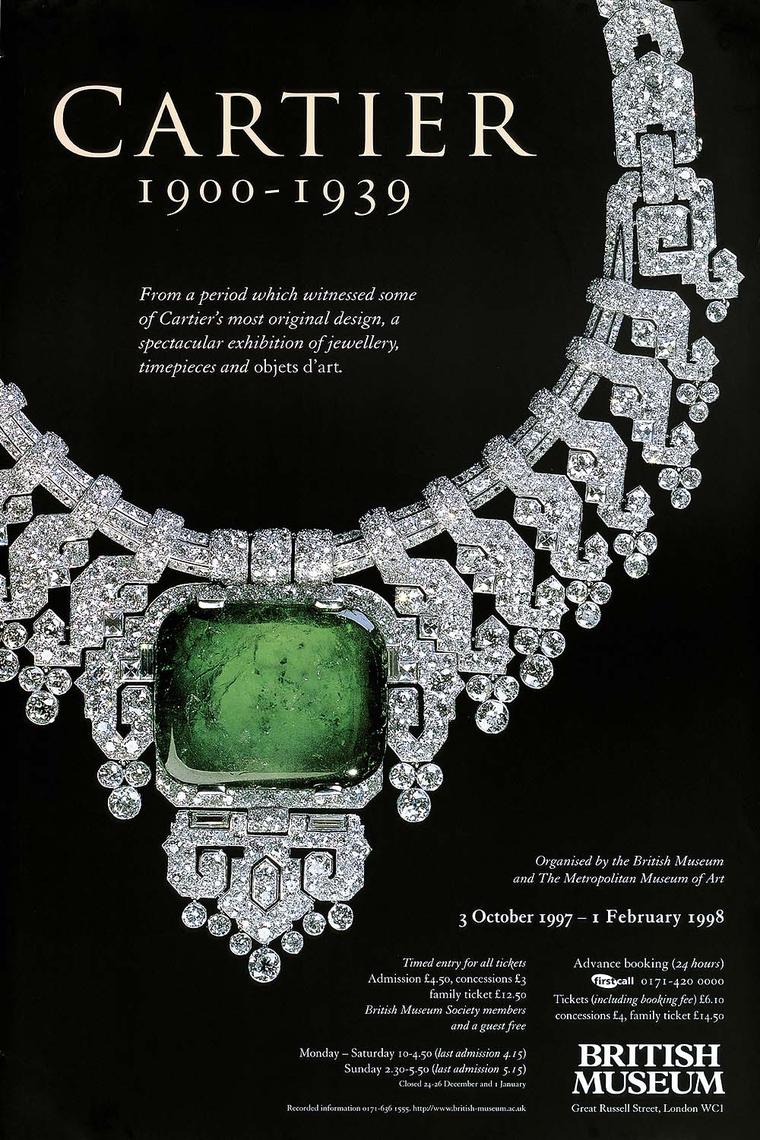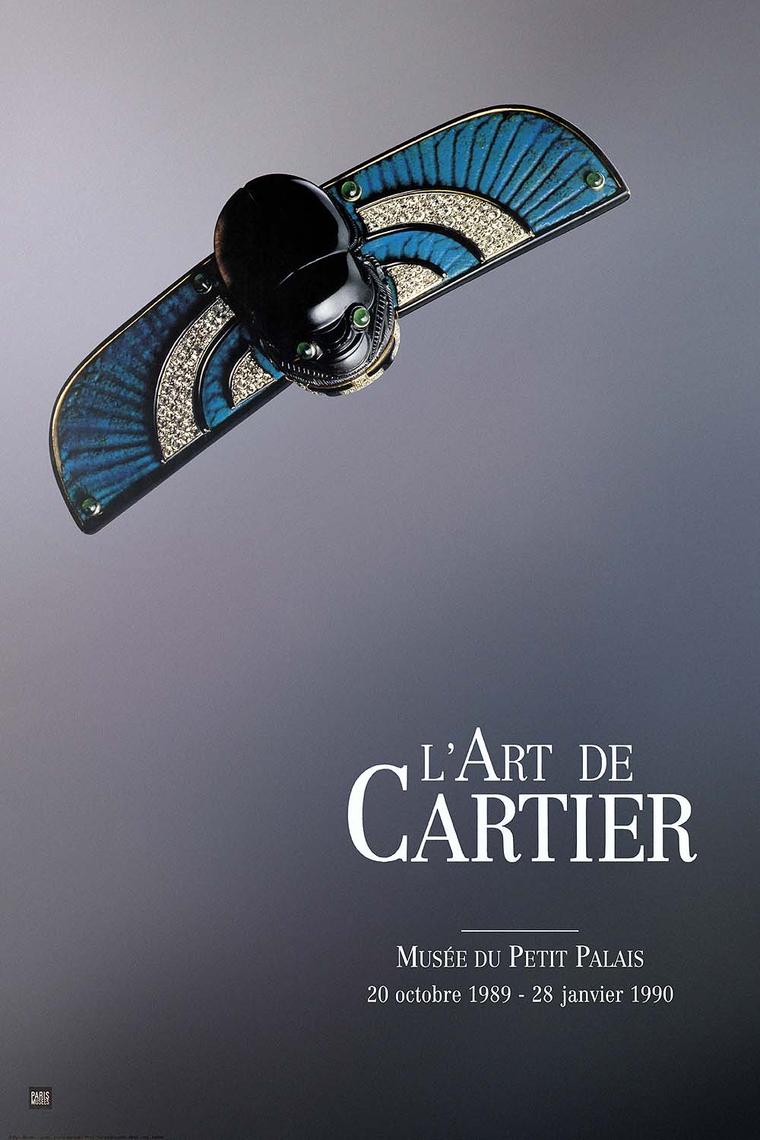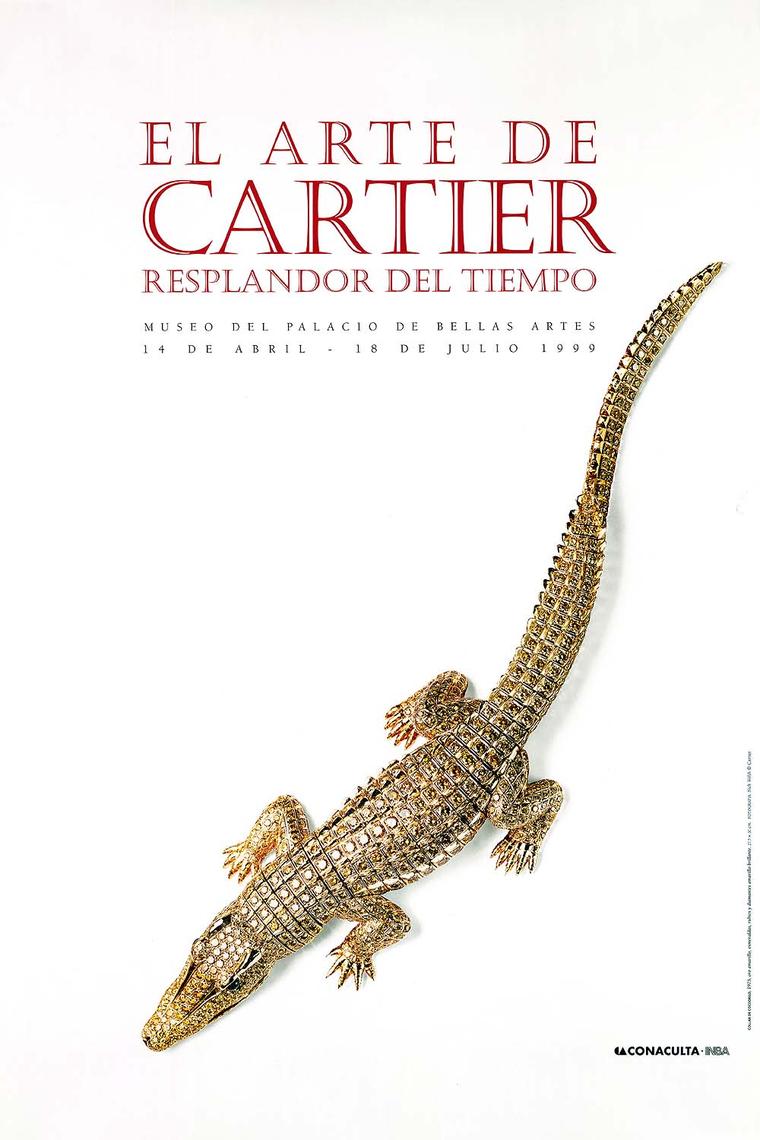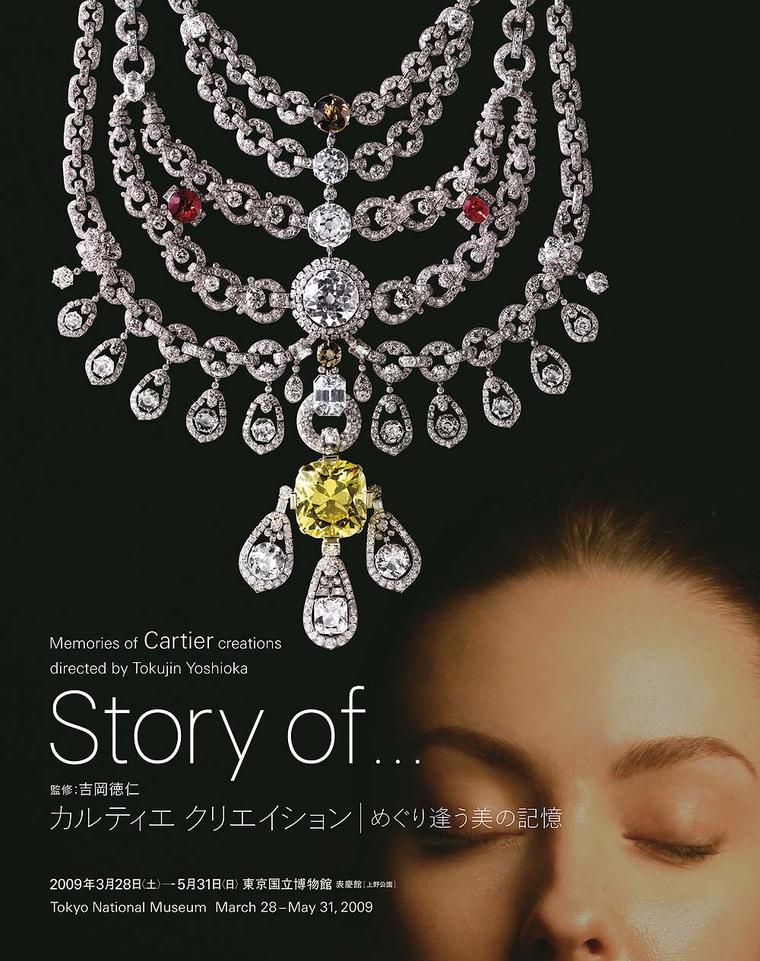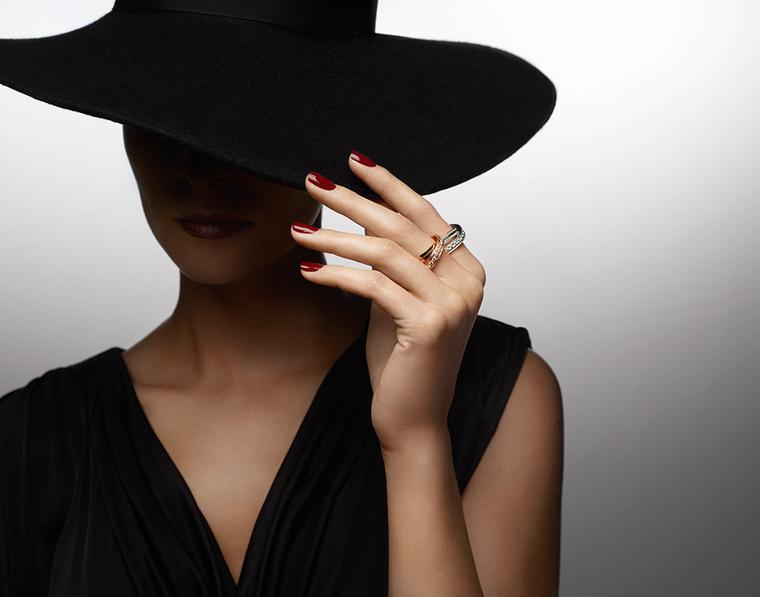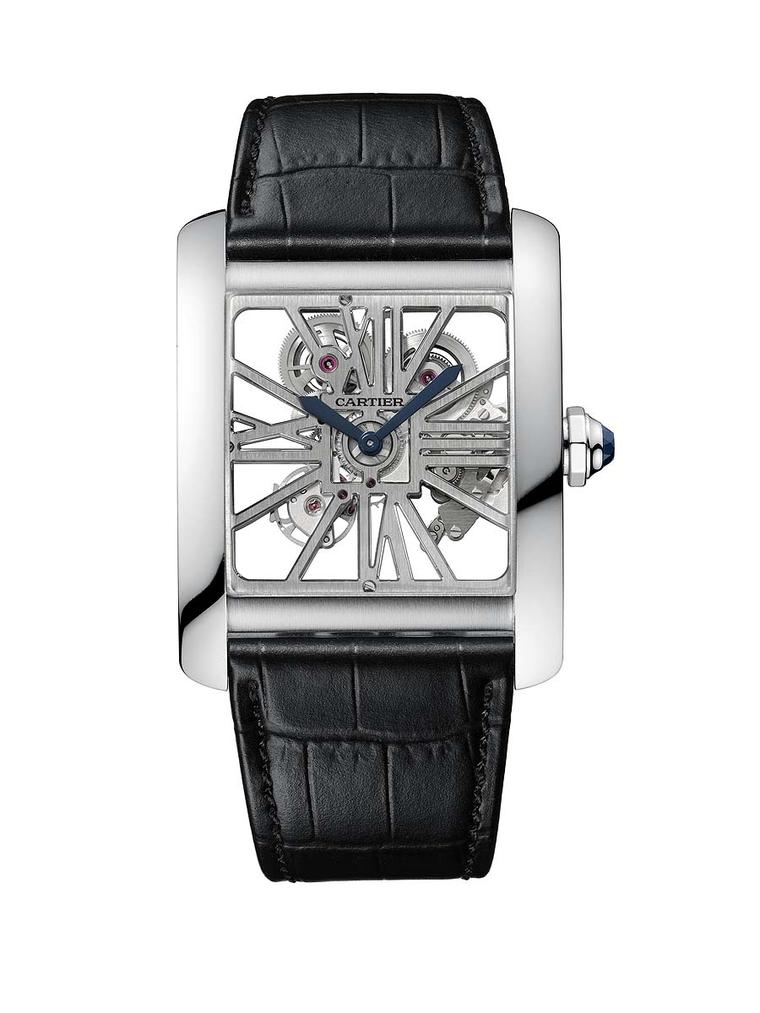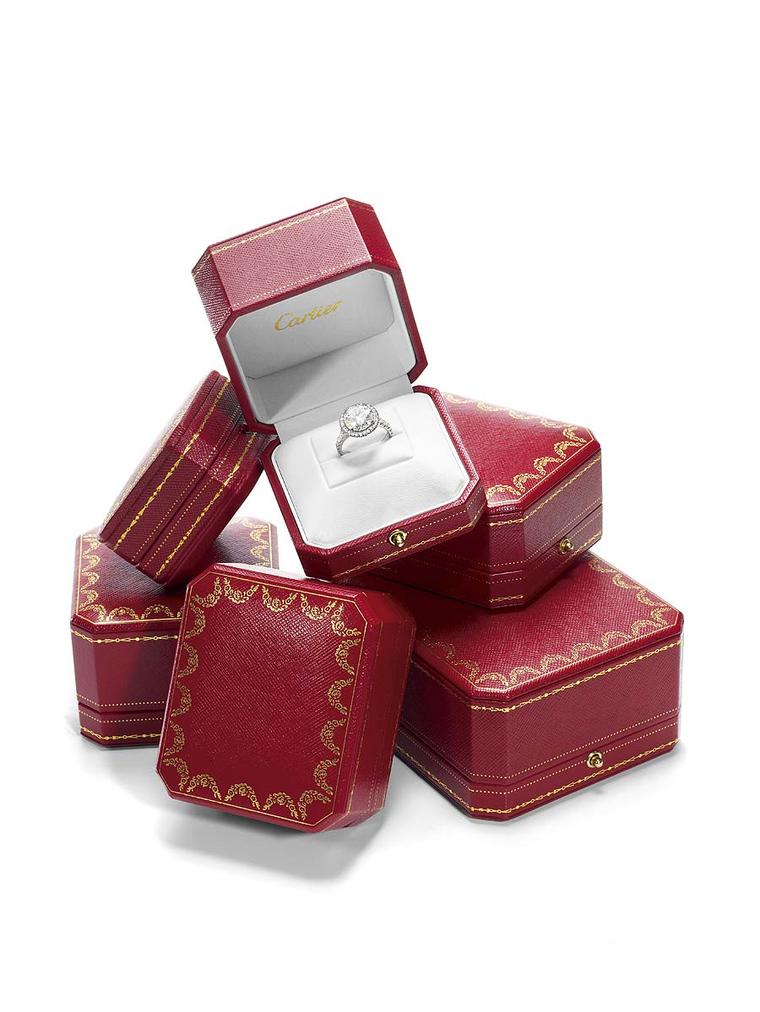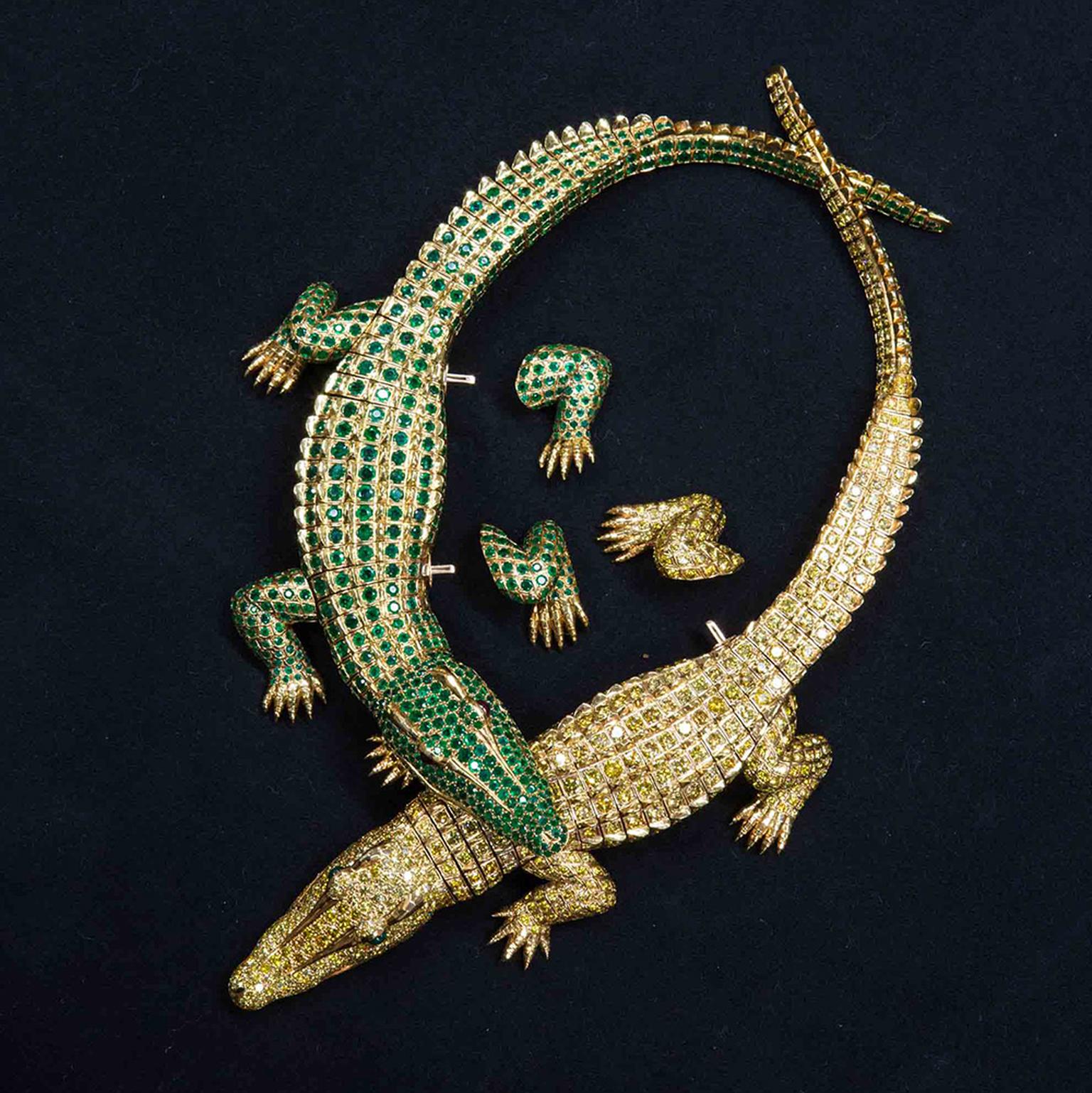
I have had the pleasure of seeing almost every one of Cartier's high jewellery collections over the past decade. The unveiling of them is always a special moment. It is the first and last time these collections of one-off jewels, often created around a theme, are shown together before they are snapped up by clients.
Every time I see these unique pieces - the highest pinnacle of the art of the jeweller - I feel as if I am in a museum. It could be the fact that the jewels are often behind security glass or part of an elaborate tableau and that they are always perfectly lit and curated. But it is mainly because the jewels are so museum-worthy, never mind highly wearable and achingly desirable.
So it is unsurprising that Cartier's jewellery has been exhibited in some of the most renowned and respected museums in the world. Since 1989, every single one of the 26 Cartier exhibitions you can see advertised in these posters has been requested and curated by the museums and galleries themselves, which is an incredible achievement for Cartier and testament to the maison's worldwide renown.
On the eve of a major Cartier retrospective in Paris, which opens this December at the Grand Palais, it is timely to look back at some of the Cartier exhibitions worldwide that have paved the way for this major event. None have been on as grand a scale as 'Cartier, Style and History', which is expected to attract visitors in their millions. But each gives an insight into the many different facets in Cartier's remarkable legacy, which will be explored in detail in Paris this winter.
It all began with 'L'Art de Cartier' at the Petit Palais Museum in Paris in 1989. Commissioned by Gilles Chazal, director of the museum, the exhibition drew a record-breaking crowd of 260,000, second only in number of visitors to the now legendary 1967 Tutankhamun exhibition. "Those marvellous materials we call diamond, pearl, ruby, sapphire, jade, onyx, coral, gold, silver and platinum, discovered, extracted and fashioned by expert craftsmen, who have revealed the splendour of these materials through the use of light and fabulous possibilities," wrote Chazal about the Cartier jewels on display. These included the first pieces in the fledgling Cartier Collection, an archive of historically important Cartier creations that today totals 1,475 pieces, many of which will form the centerpiece of the Grand Palais retrospective.
In 1992, Cartier was given an opportunity to explore its past in the ornate surrounds of The Hermitage Museum in St Petersburg. 'The Art of Cartier' exhibition celebrated the maison's role as official purveyor to the Russian imperial court and included some magnificent Kokoshnik tiaras - traditional Russian folk headdresses. The exhibition commemorated Cartier's regal associations, a theme that was revisited in the 2009 exhibition 'Cartier Treasures - King of Jewellers, Jewellers to Kings' at the Palace Museum in Beijing.
Like the forthcoming retrospective at the Grand Palais in December, many exhibitions have offered visitors a glimpse into Cartier's rich and storied history. Some, like the 'Cartier 1900-1939' exhibition, which travelled to three destinations in the space of four years, examined the evolution of the Cartier style over time, while others, like 'The Art of Cartier' at the Shanghai Museum - the first time a jeweller had presented a historically important collection of jewellery to the Chinese public - became key moments in Cartier's history themselves.
I spent a fascinating afternoon at the 'Cartier 1900-1939' exhibition at the British Museum in London back in 1997. The Art Deco era had a profound influence on Cartier, resulting in dazzling jewelry, precious objects and fantastical timepieces and clocks, many of which were on display at the British Museum. The highlight for me was a collection of mystery clocks from the 1920s, which continue to enthrall. Cartier is famed for these incredible clocks, whose hands appear to float freely within precious materials or even float on water, the inner workings invisible to the human eye.
Some exhibitions have taken a more aesthetic approach to Cartier's creations, showcasing iconic designs of the maison, while others have approached Cartier's jewels from an artistic viewpoint. The renowned Italian architect and designer Ettore Sottsass took on the role of artistic director of an exhibition that travelled to Berlin, Milan, Kyoto and Houston between 2002 and 2005. Hosted in unexpected spaces, including a disused electrical power plant and an ancient temple, it took the visitor on an emotional journey that focused on the appreciation of the jewellery's beauty rather than its social history.
The most recent Cartier exhibition is showing at the Liaoning Provincial Museum in Shenyang, the largest city in northeast China, until the end of October. Here, more than 300 pieces from the Cartier Collection are on display alongside 100 masterpieces from the museum's Chinese collection. The exhibition celebrates China, one of Cartier's inexhaustible sources of inspiration, via some of the most precious objects created in the maison's 165-year history.
Like every Cartier exhibition that has preceded it, the forthcoming retrospective at the Palais promises to be extraordinary and not to be missed. What makes 'Cartier, The Style and History' exhibition extra special, however, is that it will be the first time in almost 20 years that Parisians and visitors to the French capital will be able to set eyes on hundreds of treasures from the Cartier Collection in the city in which the maison was founded 160 years ago.
Make a note in your diary and book your Eurostar or plane ticket to Paris. I will be there, nose pressed against the display cabinets, sighing all the way.


